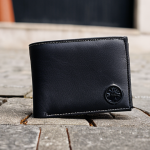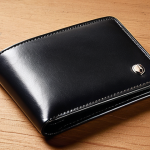Picking out the perfect everyday carry item isn’t just about utility; it’s about making a statement, a reflection of your personal style and values. When it comes to something as iconic as Rimowa, that choice feels even more significant.
I’ve personally agonized over the decision between their sleek, robust metal cardholders and the lighter, often more vibrant plastic cases. It’s not merely a material difference; it’s a statement about durability, the tactile experience, and frankly, how much wear and tear you’re willing to embrace from your daily grind.
In a world increasingly leaning towards conscious consumption and long-term investments, the allure of a truly indestructible item like a metal cardholder resonates deeply.
Yet, the versatility and reduced bulk of a well-engineered plastic case can’t be overlooked, especially as our wallets shrink with the rise of digital payments and minimalist lifestyles.
We’re seeing a clear shift where consumers prioritize longevity and sustainability, demanding products that tell a story over years, not just seasons.
How do these two Rimowa offerings truly stack up against the backdrop of future trends in personal accessories and material science? I’ll clarify all of that for you.
The Deep Dive into Material Philosophy: Beyond Just Looks

When I first considered diving into the world of Rimowa cardholders, I was immediately struck by the sheer weight of the decision. It wasn’t just about picking a color or a size; it was about committing to a material, a philosophy, really, that would define how I interacted with my daily essentials.
The metal cardholder, particularly the aluminum, whispered promises of unwavering resilience, a piece of industrial art that would age with character.
But then, the plastic cases, with their surprising lightness and often more vibrant hues, presented a compelling counter-argument. It truly felt like a battle between a steadfast, unyielding legacy and a nimble, modern interpretation of utility.
I remember feeling a genuine pull in both directions, each material embodying a different approach to personal carry, reflecting distinct priorities in an increasingly digital world.
This initial gut feeling, I’ve come to realize, is precisely where the true comparison begins – not in specifications, but in the inherent values each material represents to its owner.
1. The Weight of Heritage Versus the Lightness of Innovation
For me, the aluminum Rimowa cardholder felt like holding a piece of history, a miniature version of their iconic luggage that has graced airport carousels for decades.
There’s an undeniable gravitas to it, a satisfying heft that immediately communicates quality and durability. My first thought was, “This feels like it could survive anything.” It’s less a cardholder and more a tiny, fortified vault for my most important cards.
This sense of heritage, of investing in something built to last not just years but potentially generations, is a powerful draw for many, myself included.
It’s a physical manifestation of permanence in an impermanent world.
2. The Psychological Impact of Tactile Experience
On the other hand, the plastic cases, often crafted from high-quality polycarbonate, offered a different kind of appeal. My hands immediately noticed the difference in weight – or lack thereof.
It was surprisingly light, almost ethereal in comparison to its metallic counterpart. This lightness, I discovered, brings a certain freedom. It slips effortlessly into a pocket, hardly making its presence known until needed.
There’s a quiet efficiency to it, a modern sensibility that values unencumbered movement and minimalist living. I found myself contemplating how often I’d be pulling it out, feeling its smooth, matte surface, and realizing that this tactile interaction, whether with cool, rigid metal or sleek, feather-light plastic, significantly impacts the overall user experience.
It’s an emotional connection that goes beyond mere functionality, shaping how you perceive your everyday carry.
Tactile Sensations and Enduring Resilience: A Daily Companion
The true test of any everyday carry item, for me, isn’t just its initial appearance or brand prestige, but how it holds up to the relentless grind of daily life.
It’s about the scratches it accumulates, the way its surface changes, and how reliably it performs after countless trips in and out of pockets, bags, and hands.
My own journey with various cardholders has taught me that durability isn’t just about preventing breakage; it’s about how gracefully a product ages and continues to function flawlessly.
The Rimowa metal cardholder, with its signature grooved aluminum, immediately brings to mind a battle-hardened veteran – each ding and scuff tells a story, adding character rather than detracting from its appeal.
This is a crucial distinction that deeply affects the long-term satisfaction of owning such an item. It becomes a part of your personal narrative, a silent witness to your adventures.
1. The Patina of Time: Embracing Wear and Tear
My experience with aluminum products has always been that they don’t just “wear out”; they “wear in.” The metal Rimowa cardholder is a prime example of this.
The very first scratch I noticed on mine, a faint line against the brushed aluminum, felt less like damage and more like a mark of authenticity. It was a testament to its journey with me, a unique fingerprint that distinguished it from any other identical piece.
This ability to absorb the bumps and scrapes of daily life, to develop a unique patina over time, is incredibly appealing for those who appreciate items that tell a story.
It avoids that gut-wrenching feeling when a pristine item gets its first blemish; instead, it transforms it into a badge of honor. It truly feels like a companion that evolves alongside you.
2. The Unseen Strength: Polycarbonate’s Hidden Durability
On the flip side, the plastic (polycarbonate) Rimowa cases, while lacking the “battle-scarred” aesthetic, offer a different kind of resilience. I’ve been genuinely surprised by how tough these seemingly lighter cases are.
They bounce back from drops with remarkable elasticity, often absorbing impacts without leaving a visible mark. This “hidden strength” is a huge advantage for those who prefer their items to maintain a more consistent, factory-fresh appearance.
While they might eventually show scuffs, they tend to be less noticeable than deep gouges on metal. It’s a pragmatic choice for the person who values lightweight performance and a clean look, without constantly worrying about minor cosmetic damage.
It’s truly a testament to modern material science.
The Aesthetics of Aging: Patina vs. Pristine
This is where the emotional investment really kicks in for me. We don’t just buy items for what they do, but for how they make us feel and how they look as they integrate into our lives.
The way a product ages speaks volumes about its quality and the design philosophy behind it. When I think about my personal items, I often categorize them into those I want to look exactly the same forever and those I want to develop a unique character over time.
Rimowa’s metal and plastic offerings fall neatly into these two distinct camps, each with its own compelling aesthetic journey. It’s a deeply personal choice, influencing not just our daily interactions but also the long-term satisfaction we derive from our possessions.
The choice isn’t just about material; it’s about the narrative you want your items to tell.
1. The Noble Scars of Aluminum
There’s a certain rugged elegance to an aluminum Rimowa cardholder that has seen some life. I’ve seen some of my friends’ older Rimowa luggage, completely covered in stickers and dents, and they just look *cooler*.
The cardholder follows this same principle. Each minor dent, each scratch that catches the light, adds to its unique narrative. It’s not about being flawless; it’s about being authentic.
This “noble scarring” creates a look that simply cannot be replicated by a new, pristine item. It’s a testament to adventures, daily commutes, and countless interactions.
For me, this is where the metal truly shines – it becomes a tangible diary of my everyday movements. It speaks of a life lived, not just a product owned.
2. The Enduring Polish of Polycarbonate
In stark contrast, the polycarbonate cases aim for a more consistent, unblemished aesthetic throughout their lifespan. While they can and do get scuffs, particularly if they encounter rough surfaces, they generally maintain their original color and sleek finish far better than metal.
For those who prioritize a clean, unmarred appearance, this is a significant advantage. I’ve found that a quick wipe-down can often restore much of their original luster.
It’s the choice for someone who prefers their accessories to always look relatively new, or at least well-maintained, without the visible “wear and tear” story.
This might appeal to a more minimalist sensibility, where the item itself should be discreet and consistently polished, not drawing attention through its battle scars.
It’s a subtle statement of modern design.
Practicality Personified: Slim Profiles and Everyday Carry Realities
In the current landscape of digital payments and a growing desire for minimalist living, the physical wallet, or cardholder, has undergone a significant transformation.
It’s no longer just about holding cash and cards; it’s about optimizing space, minimizing bulk, and ensuring quick, seamless access to essentials. My own experience with everyday carry has shown me that even a few millimeters of thickness can make a huge difference in comfort and convenience, especially when carrying items in a front pocket.
The practical implications of material choice in a Rimowa cardholder extend far beyond just durability and aesthetics; they delve into the very fabric of how we navigate our daily routines, influencing everything from pocket bulge to ease of access.
1. The Slimness Factor: Adapting to Modern Pockets
One of the most immediate practical differences I noticed between the two Rimowa offerings was their relative slimness. While both are designed to be compact, the plastic versions often feel marginally thinner, especially when loaded with a similar number of cards.
This might seem like a minor detail, but for someone like me who often carries their cardholder in a front jeans pocket, every millimeter counts. A slimmer profile means less bulk, greater comfort, and a smoother outline, avoiding that awkward bulge.
This aspect became particularly significant as I gradually reduced the number of physical cards I carried, relying more on digital payments. The plastic version seemed to inherently align better with this evolving, minimalist approach to EDC.
2. The User Experience: Opening, Closing, and Accessing Cards
Beyond just physical dimensions, the mechanics of accessing cards also play a vital role. The Rimowa metal cardholders often feature a robust, almost satisfyingly crisp locking mechanism, typically a clasp or a strong magnet that clicks securely into place.
This gives a reassuring sense of security that your cards are well-protected. In contrast, many of the plastic cases utilize a more flexible, often snap-closure system or an open design, which prioritizes speed and ease of access.
I’ve found that while the metal one feels like a tiny safe, the plastic one often allows for quicker retrieval of a single card, especially if you’re in a rush at a checkout.
The choice here truly comes down to whether you prioritize ultimate security and a tactile “click,” or swift, unencumbered access in your daily interactions.
| Feature | Aluminum Cardholder | Polycarbonate Case |
|---|---|---|
| Material Feel | Cool, substantial, industrial | Smooth, lightweight, modern |
| Aesthetic Aging | Develops unique patina, visible dents/scratches | Maintains consistent look, less visible wear |
| Impact Resistance | Resistant to crushing, dents visible on impact | Absorbs shock, less prone to visible damage from drops |
| Weight | Heavier, noticeable presence in pocket | Lighter, often unnoticeable in pocket |
| Price Point (General) | Higher investment | More accessible |
Investment, Sustainability, and Brand Legacy: More Than Just a Purchase
When I decide to purchase a premium item like a Rimowa cardholder, I’m not just buying a functional accessory; I’m making an investment. This investment isn’t just financial; it’s an investment in quality, in design, and in a brand’s promise of longevity.
Furthermore, in today’s world, the concept of sustainability plays an increasingly critical role in my purchasing decisions. I want to know that the products I choose are built to last, reducing the need for constant replacement and minimizing my environmental footprint.
Both the metal and plastic Rimowa offerings embody different facets of this investment and sustainability philosophy, each appealing to a slightly different set of values.
It’s about aligning my purchase with my broader principles, extending the conversation beyond mere utility to encompass ethical and long-term considerations.
1. The Durability Dividend: A Lifetime Companion
For me, the metal Rimowa cardholder truly embodies the “buy it for life” philosophy. The robustness of the aluminum suggests a product that can withstand decades of use, perhaps even outliving me.
This inherent longevity translates into a significant durability dividend – the value derived from not having to replace an item repeatedly. It reduces waste and offers a strong sense of reliability.
I’ve heard stories of people passing down their Rimowa luggage, and I genuinely feel that the cardholder carries the same potential for enduring heritage.
It’s a purchase that feels less like consumption and more like acquiring a durable artifact. This sense of permanence makes the initial higher cost feel justified, as it’s a commitment to a lasting object.
2. Resourcefulness and Modern Manufacturing
The polycarbonate cases, while not offering the same kind of “heirloom” potential as the aluminum, still represent a thoughtful approach to material use.
Modern plastics, especially those used by high-end manufacturers like Rimowa, are incredibly durable and often made with an eye towards efficient resource use and potential recyclability.
While their lifespan might not match that of metal, their lower initial environmental footprint (in terms of raw material extraction and energy for production) can be appealing.
For a brand like Rimowa, known for its precision engineering, choosing to work with polycarbonate isn’t a downgrade; it’s an exploration of how advanced materials can offer different benefits – from reduced weight to impact absorption – while still maintaining a high standard of quality.
It reflects a commitment to innovation within their brand legacy.
The Evolving Landscape of EDC: Anticipating Future Needs
The world of everyday carry is far from static. Just a few years ago, my wallet was bursting with loyalty cards, cash, and receipts. Today, it’s increasingly streamlined, mirroring the shift towards digital payments, mobile IDs, and a general preference for carrying less.
This evolution profoundly impacts what we look for in an EDC item like a cardholder. It’s not just about what works now, but what will continue to be relevant and useful as technology and our daily habits evolve.
When I consider a Rimowa cardholder, I’m thinking about its adaptability to an increasingly minimalist, tech-driven future. It’s about making a forward-thinking choice that won’t become obsolete as quickly as a new smartphone app.
1. Adapting to Digital Wallets and Cashless Trends
My own daily routine has dramatically shifted towards using my phone for almost all payments. This means my physical cardholder often holds just a few essential cards – my ID, a primary credit card, and perhaps a health insurance card.
In this context, bulk becomes the enemy. The lighter, often slimmer plastic cases seem inherently more aligned with this minimalist trend. They’re less about carrying a multitude of items and more about providing a secure, elegant home for the bare essentials.
I personally appreciate how unobtrusive they are, complementing rather than competing with my phone for pocket space. It feels like a natural evolution, reflecting how our physical carry items are becoming increasingly specialized and refined.
2. The Future of Personalization and Tech Integration
Looking ahead, I can’t help but wonder how accessories like cardholders will integrate with future tech. Will they incorporate tracking capabilities? Perhaps biometric access?
While both Rimowa materials offer a robust shell, the ease of integrating such technologies might vary. Plastic, being more amenable to molding and incorporating antennas or sensors, *might* offer more flexibility for future tech integration.
However, the sheer durability and classic appeal of metal could also mean it remains a timeless, tech-agnostic choice that stands apart from the rapid churn of digital devices.
It’s an interesting thought experiment that influences my perception of their long-term utility and aesthetic relevance in a world constantly striving for the next big innovation.
Making the Ultimate Choice: Aligning with Your Lifestyle
Ultimately, the decision between a Rimowa metal and plastic cardholder isn’t a matter of one being definitively “better” than the other. It’s a deeply personal choice, intertwined with your lifestyle, your aesthetic preferences, and what you value most in an everyday companion.
I’ve realized that the perfect cardholder isn’t just a functional item; it’s an extension of your personality, a silent statement about how you approach your daily life and your possessions.
Reflecting on my own journey, I’ve found that the most satisfying choices are those that resonate with my core values, whether that’s rugged durability, sleek minimalism, or a blend of both.
It’s about finding that sweet spot where form, function, and personal philosophy align perfectly.
1. Deciphering Your Personal Priorities
Before making the leap, I found it incredibly helpful to sit down and honestly evaluate what mattered most to me. Was it the feeling of something incredibly robust and heirloom-worthy in my hand?
Was it the lightweight ease of carrying something barely noticeable? Did I want an item that showed its age with character, or one that consistently looked pristine?
For those who appreciate the visible story of their items, the metal option truly shines, each scuff adding to its unique narrative. If, like me sometimes, you prioritize an unburdened, sleek aesthetic and a preference for less bulk, then the plastic option offers unparalleled convenience.
It’s a rare opportunity to truly match an object to your individual rhythm of life.
2. The Long-Term Relationship: An Accessory that Endures
My final consideration always comes back to the idea of a long-term relationship with my possessions. Which one will I still appreciate and genuinely enjoy using five, ten, even twenty years down the line?
The Rimowa metal cardholder, with its iconic design and tank-like construction, certainly feels like a piece I could cherish for a lifetime, its battle scars becoming cherished memories.
The plastic, while incredibly practical and stylish, might align better with someone who prefers to update their accessories more frequently, or who values cutting-edge lightness and efficiency above all else.
Both are exceptional products from a revered brand, but they offer distinct journeys. Your choice isn’t just about what you buy today, but about the kind of companion you want for your everyday adventures tomorrow.
Wrapping Up
As we’ve journeyed through the intricate details of Rimowa’s cardholder offerings, one thing has become abundantly clear: your ultimate choice is a deeply personal reflection of your lifestyle and values. It’s not about finding a universally “better” product, but rather the one that resonates most profoundly with how you live, how you carry your essentials, and how you want your cherished items to age. Whether you gravitate towards the storied resilience of aluminum or the sleek, understated efficiency of polycarbonate, you’re investing in a piece of design excellence from a brand renowned for its unwavering quality. This isn’t just a purchase; it’s the beginning of a daily relationship with an accessory that will silently accompany you on countless adventures, reflecting your unique journey.
Useful Information
1. Assess Your Daily Carry Habits: Before deciding, take a moment to consider how many cards you typically carry and whether you prefer maximum slimness or a more robust feel in your pocket. This often guides the initial material preference.
2. Define Your Aesthetic of Aging: Do you appreciate visible signs of use, like scratches and dents that tell a story, or do you prefer your accessories to maintain a consistently clean, pristine look? Your answer will strongly influence whether metal’s patina or plastic’s endurance appeals more.
3. Consider Your Budget and Investment Horizon: Aluminum options generally represent a higher initial investment but are often viewed as a “buy it for life” item with potential heirloom qualities. Polycarbonate offers a more accessible entry point while still delivering premium quality.
4. Feel is Everything: If possible, try to physically hold both types of cardholders. The tactile sensation of cool, weighty aluminum versus light, smooth polycarbonate can be a surprisingly significant factor in your decision-making process.
5. Think Long-Term Utility: With the ongoing shift towards digital payments, consider how much you’ll rely on a physical cardholder in the future. Both options offer security and elegance for essential cards, but their long-term relevance might be perceived differently based on your tech adoption.
Key Takeaways
Choosing between a Rimowa metal and plastic cardholder ultimately boils down to aligning the product with your personal priorities. The aluminum option appeals to those who value heritage, a robust feel, and a unique patina that develops over time, telling a story through its “battle scars.” Conversely, the polycarbonate case offers modern lightness, consistent aesthetics, and excellent hidden durability, perfect for a more unencumbered, pristine look. Both are premium accessories from a distinguished brand, designed to serve as reliable daily companions, but they cater to distinct lifestyles and aesthetic preferences. Your ideal choice is the one that best complements your daily routine and personal philosophy on how your possessions should interact with your life.
Frequently Asked Questions (FAQ) 📖
Q: In an era where digital payments dominate and wallets are shrinking, how do Rimowa’s classic cardholder materials—metal versus plastic—maintain their relevance, and which truly aligns with the future trajectory of personal accessories?
A: You know, it’s funny, I’ve often asked myself the exact same thing as my physical wallet gets thinner and thinner. But here’s the thing I’ve personally realized: even with Apple Pay and Google Wallet on our phones, there’s still a deep, almost primal satisfaction in pulling out a well-made cardholder.
The metal Rimowa, for me, totally transcends mere utility. It’s not just holding your cards; it’s a statement, a piece of art that gains character with every scuff.
It aligns perfectly with that “buy less, buy better” ethos, becoming a timeless heirloom rather than a disposable item. The plastic, while certainly more practical for some due to its lighter weight and perhaps less ‘precious’ feel, still carries that iconic Rimowa grooved design, but it doesn’t quite evoke the same sense of enduring legacy.
In terms of future trends, where consumers are increasingly valuing longevity, sustainability, and unique personal stories over fleeting trends, that metal piece really shines.
It’s an investment in a tactile experience that digital life just can’t replicate. It’s about owning something that will be with you for decades, not just until the next phone upgrade.
Q: Beyond just theoretical durability, what’s the tangible, day-to-day experience of owning a Rimowa metal cardholder compared to a plastic one, especially when considering how daily wear and tear shows up?
A: Oh, this is where the rubber truly meets the road, or more accurately, where the metal meets your keys! I’ve had both, and the difference in daily experience is immediate and profound.
The metal Rimowa cardholder? It’s got a heft to it, a satisfying coolness when you first pick it up in the morning. When you drop it—and trust me, you will—it makes this distinct clunk that’s a mix of alarming and reassuring.
Every little ding, every scratch from bouncing around in your pocket with loose change or your keys, tells a story. It develops this gorgeous, unique patina, much like a well-traveled suitcase or a vintage watch.
It ages with you, feeling more personal over time. The plastic one, on the other hand, is feather-light. It’s more forgiving if you drop it, less likely to dent, but when it does show wear, it often feels more like ‘damage’ rather than ‘character.’ Scratches on plastic can look duller, less intentional.
While it’s practical and doesn’t demand as much ‘care,’ it lacks that visceral connection you get from a piece of metal that’s clearly built to outlast you.
For me, that lived-in, battle-hardened look of the metal is a huge part of its appeal.
Q: Given the growing emphasis on conscious consumption and sustainability, which Rimowa cardholder material—metal or plastic—emerges as the more responsible and long-term investment from an environmental and value perspective?
A: This is a fantastic question that cuts right to the heart of what many of us are thinking about these days. From a sustainability standpoint, my strong leaning is towards the metal Rimowa.
Think about it: that aluminum is incredibly durable, meaning it’s built to last for generations. We’re talking ‘buy it for life’ territory, which is the ultimate form of sustainable consumption—reducing waste by buying less frequently.
While the initial production of aluminum is energy-intensive, its longevity and high recyclability (aluminum is one of the most recycled materials globally, often retaining its quality) make it a strong contender for a truly circular economy.
The plastic, while lighter and perhaps less resource-intensive to produce initially, has questions marks over its long-term durability and end-of-life recyclability, depending on the specific type of plastic used and local recycling infrastructure.
Frankly, plastic accessories, even premium ones, often fall prey to the perception of being more disposable over very long timelines. For an investment that speaks to both personal value and environmental responsibility, the metal, with its inherent robustness and potential for endless recycling, just feels like the smarter, more conscientious choice for the long haul.
It’s an investment not just in a product, but in a philosophy.
📚 References
Wikipedia Encyclopedia
구글 검색 결과
구글 검색 결과
구글 검색 결과
구글 검색 결과
구글 검색 결과





